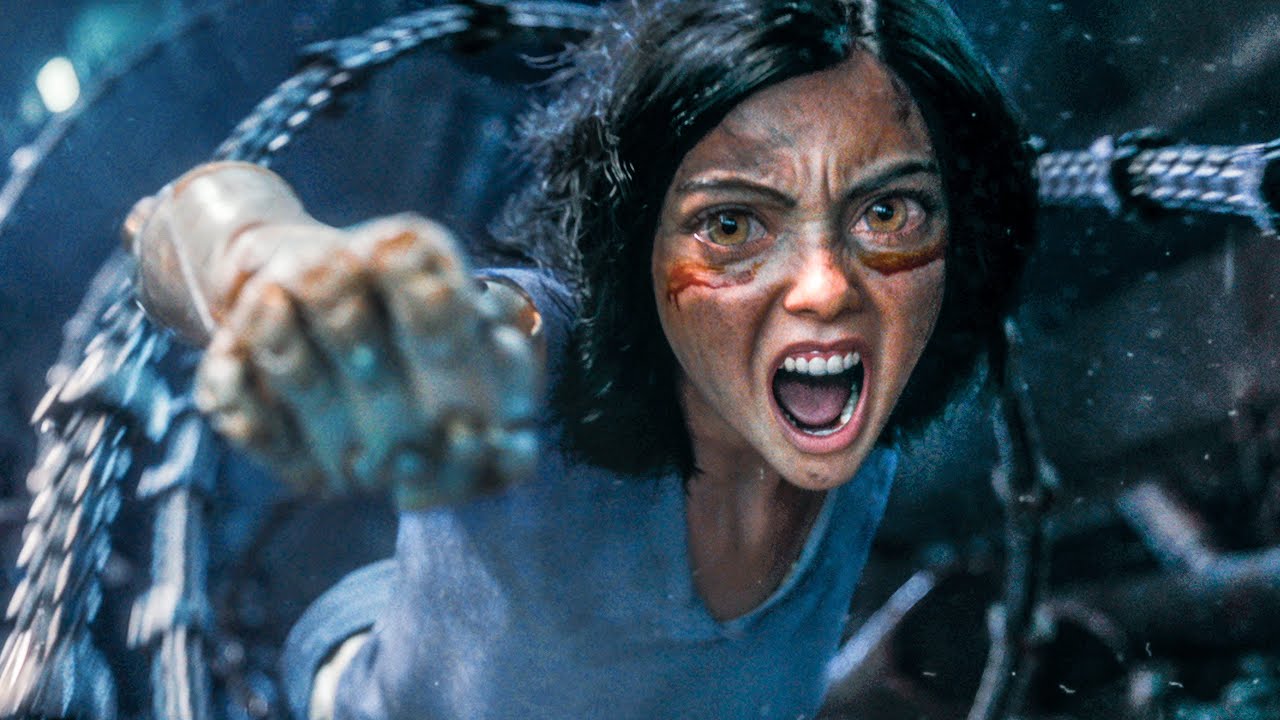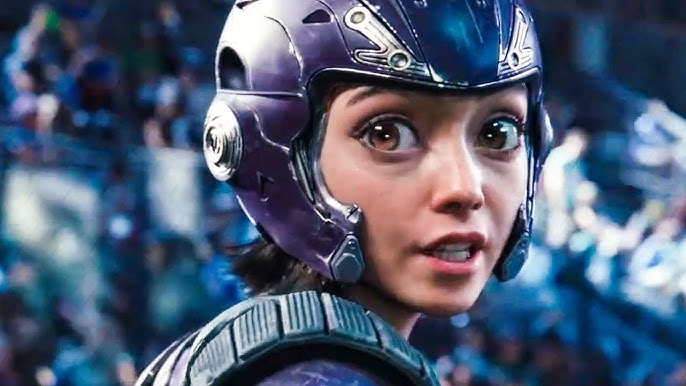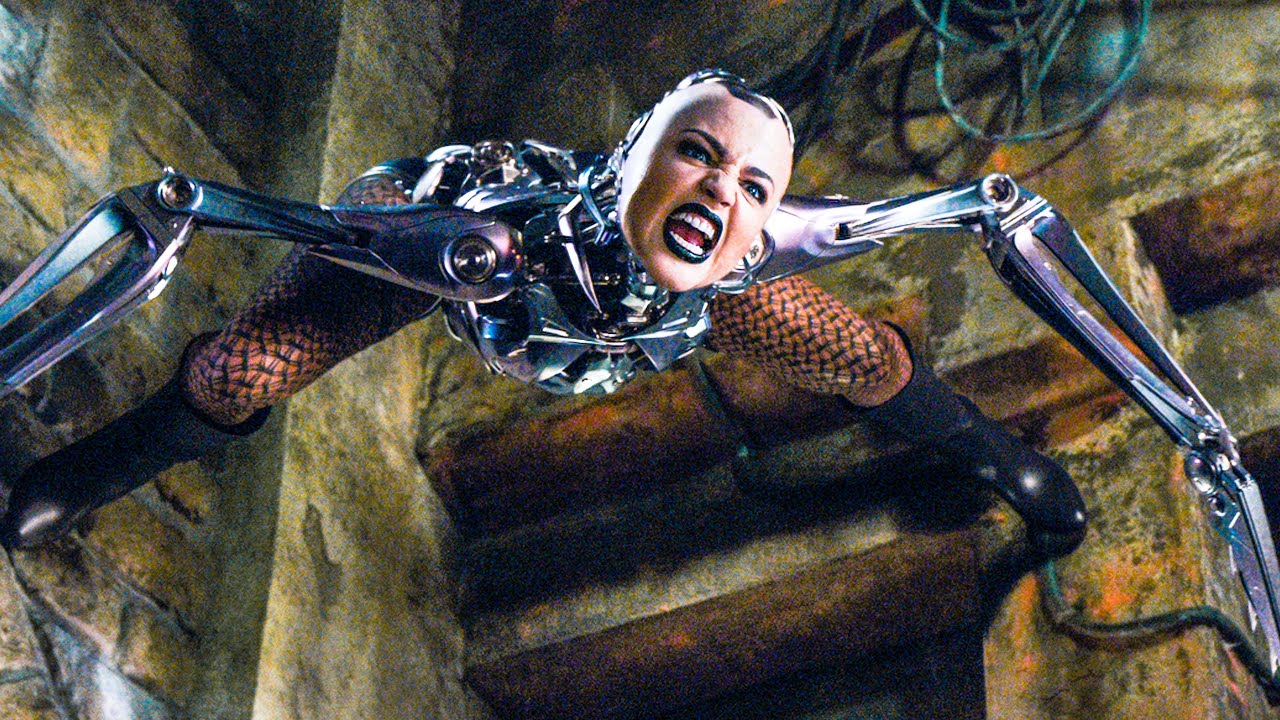Alita: Battle Angel (2019)

Alita: Battle Angel (2019) Review – A Visually Stunning Sci-Fi Adventure
Introduction
Directed by Robert Rodriguez and produced by James Cameron and Jon Landau, Alita: Battle Angel (2019) is a cyberpunk sci-fi action film based on Yukito Kishiro’s manga series Battle Angel Alita. Featuring groundbreaking visual effects, intense action sequences, and a compelling lead performance by Rosa Salazar, the film takes audiences on a thrilling journey through the dystopian world of Iron City. This review explores the film’s plot, themes, performances, cinematography, and its impact on the sci-fi genre.
Plot Summary
Set in the 26th century, the film follows Alita (Rosa Salazar), a cyborg with no memory of her past, who is discovered in a scrapyard by Dr. Dyson Ido (Christoph Waltz). Ido rebuilds her, and she soon realizes she has extraordinary combat skills. As she navigates the dangerous streets of Iron City, she befriends Hugo (Keean Johnson), who dreams of reaching the fabled sky city, Zalem.
As Alita pieces together her past, she learns about her connection to the lost warrior class known as the Berserkers and discovers her true power. Meanwhile, the sinister forces of Vector (Mahershala Ali) and the enigmatic Nova (Edward Norton) seek to control the city’s fate through the brutal sport of Motorball. Alita must embrace her identity and fight to protect those she loves while challenging the corrupt system that governs Iron City.
Themes and Symbolism
Identity and Self-Discovery
Alita’s journey is one of self-discovery as she uncovers her past and learns to define herself beyond what others perceive her to be. The film explores themes of self-acceptance and empowerment, making Alita a relatable and inspiring protagonist.
Class Divide and Dystopian Oppression
The contrast between Iron City and Zalem reflects the classic cyberpunk theme of social disparity. While Iron City’s inhabitants struggle for survival, the elite of Zalem remain untouchable. The film critiques power structures that exploit the lower class while maintaining a false sense of hope.
Humanity vs. Machine
Despite being a cyborg, Alita embodies the essence of humanity more than many of the actual humans in the film. Her emotions, compassion, and moral compass challenge the notion of what it truly means to be human.
Performances
Rosa Salazar as Alita
Salazar delivers a heartfelt and dynamic performance, bringing Alita to life through motion capture technology. Her expressive eyes and physicality make her a compelling and sympathetic heroine.
Christoph Waltz as Dr. Dyson Ido
Waltz portrays Ido with warmth and depth, making him a believable father figure for Alita. His moral struggle and dedication to protecting Alita add emotional weight to the film.
Mahershala Ali as Vector
Ali brings a suave yet menacing presence to Vector, though his character’s motivations are somewhat underdeveloped. Nonetheless, his performance enhances the film’s antagonist dynamic.
Jennifer Connelly as Chiren
Connelly’s portrayal of Chiren, Ido’s ex-wife, adds layers to the story. Her conflicted character is caught between ambition and redemption, making her one of the more nuanced figures in the film.
Keean Johnson as Hugo
Johnson’s Hugo serves as Alita’s love interest and catalyst for her exploration of human emotions. Though his arc follows a predictable path, his chemistry with Alita adds a romantic element to the narrative.
Cinematography and Visual Effects
Alita: Battle Angel is a visual marvel, with breathtaking CGI that brings Iron City and its cybernetic inhabitants to life. WETA Digital’s work on Alita’s motion capture is particularly impressive, ensuring that she feels both realistic and expressive. The film’s action sequences, especially Motorball matches and combat scenes, are expertly choreographed and visually exhilarating.
Music and Sound Design
The film’s score, composed by Tom Holkenborg (Junkie XL), blends electronic and orchestral elements to create an immersive auditory experience. The sound design effectively enhances the futuristic setting, making the world feel alive and dynamic.
Cultural Impact and Reception
Despite receiving mixed-to-positive reviews from critics, Alita: Battle Angel developed a passionate fanbase. Many praised its faithfulness to the manga, stunning visuals, and Alita’s characterization, while others criticized its screenplay and pacing. The film’s ending left room for a sequel, and fans continue to campaign for Alita: Battle Angel 2 under the hashtag #AlitaSequel.
Final Verdict
Alita: Battle Angel is a visually spectacular sci-fi film that delivers engaging action, a compelling protagonist, and thought-provoking themes. While some aspects of the narrative could have been more developed, its emotional core and breathtaking visuals make it a standout in the cyberpunk genre.











